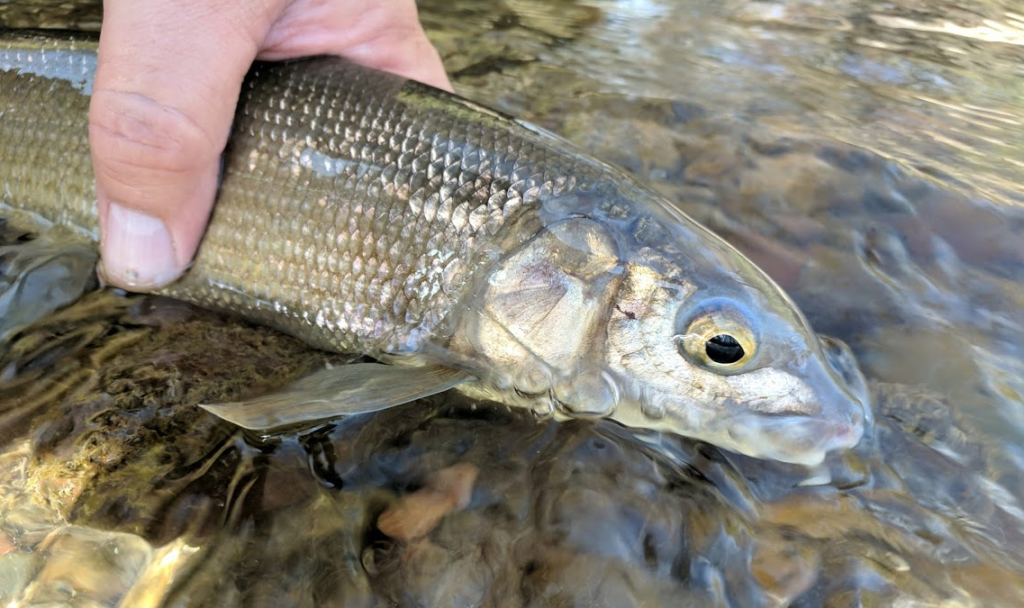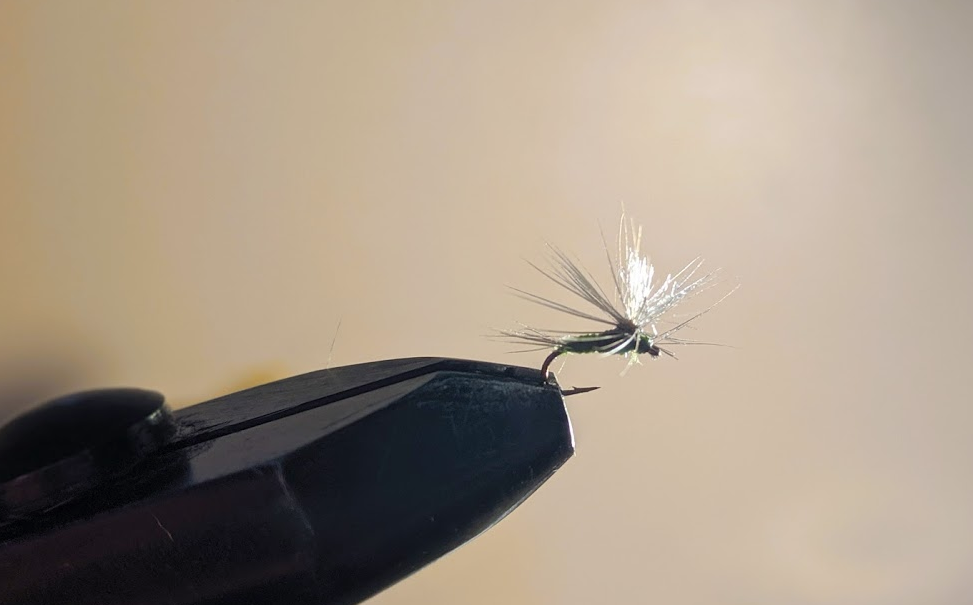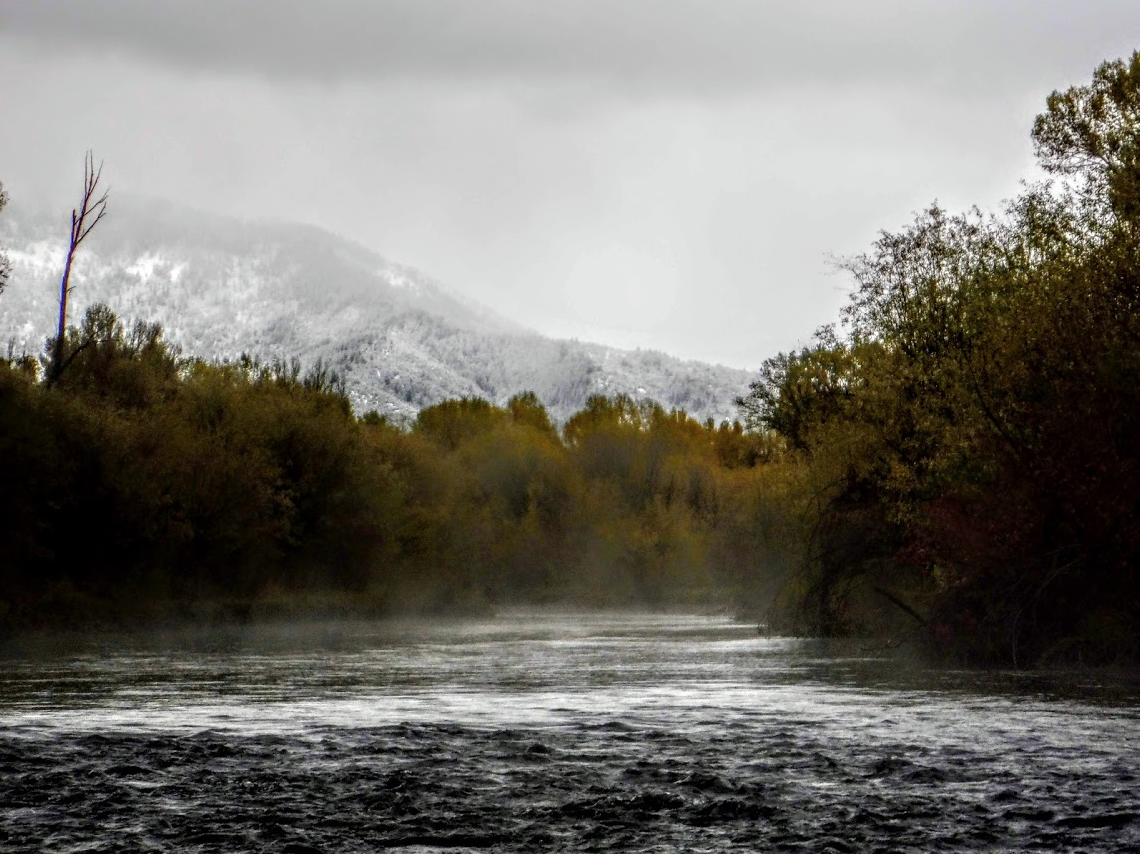It’s a tiny little bug, but it — and its many variants — might be the single-most important fly of fall.
The venerable Blue-winged Olive, the vise-borne imitation of the tiny baetis mayfly, is the dry-fly king of autumn, even though it rarely materializes on the water in any form larger than a size 20. But it’s trout food. Big time.
BWO season
On my local waters here in eastern Idaho, BWO season (and, yes, it is a season) starts with the first blustery front that usually blows through in mid- to late September. A cold-water-loving mayfly, the BWO will hatch on gray autumn days and continue to pop all through winter and into spring, particularly on tailwaters or where rivers get some thermal inflow, or on spring creeks where temperatures don’t dive so drastically.
And trout love them. As they begin to pop, usually sometime in the afternoon (I try and plan to be on the water by 1 p.m. if I want to cast dry flies, and can usually fish BWOs until dark this time of year), trout will pod up on softer water, on the current seams around tailouts and throughout deep slicks on most of our major rivers.
Over the last two weeks, we’ve enjoyed some serious BWO weather—temperatures topping out in the low 40s, cloudy skies that will occasionally spit rain, sleet and even snow and generally “unsettled” conditions that push cottonwood leaves from green to gold seemingly in a matter of hours.
These first few weeks of fall are the most dependable time of the year for BWO fishing, and while the dry-fly action can be amazing, you’re missing out if all you’re doing is waiting for rising fish.
Make a day of it
I can, with a few exceptions, make a full day out of fishing BWOs. If I go early, and I’m on the water by 10 or 11, I’ll drop a BWO emerger deep—it’ll be the “point fly” on a two-nymph rig under an indicator. The first fly, the one that creates the depth, will usually be a big Girdle Bug or a size 10 or 12 bead-head Prince. The emerger will drift more freely in the current about two feet behind the nymph, and I’ll start picking up fish on the lighter fly as soon as the light hits the water at the right angle.
On many western rivers, trout aren’t the only fish that will key on BWOs, particularly fished in nymph or emerger variants at depth. Mountain whitefish love BWOs just as much as our beloved trout, and they’re great fun on a fly rod.

As the day warms a bit, I’ll switch the Prince out for an unweighted Hare’s Ear or something similar, which will allow the emerger to drift higher in the water column. Then, when I start to see some swirls indicating action just below the surface, I’ll ditch both flies and tie on a BWO soft-hackle—this fly, fished down and across on the swing, can be absolutely deadly. And, I love the way hungry trout crush soft-hackles just below the surface.
Only when I see noses coming out of the water do I break down and tie on the size 20 BWO dun and fish it in the traditional “upstream and dry” fashion.
Later in day, BWO spinners will fall, and it’s possible to go with a size 20 spinner pattern, but I generally forego that, and just go back to the soft-hackle. This just works best for me—I have a hard time seeing spinners on the water.
Vise time
I don’t like tying small flies. And, in my book, anything smaller than a size 16 is small. But I also have a hard time paying $2.50 for a size 20 hook with a bit of olive fuzz and sparse gray hackle attached to it. So tying BWOs is a necessary evil.

To that end, I’ve streamlined the pattern I tie. Rather than go with olive dubbing, I simply go with olive thread, size 8/0. I’ll start at mid-shank and tie back to the bend in the hook. I’ll wrap in a few hackle quills for the tail, and wrap back to the tie-in point. There, I’ll tie in a very sparse parachute post made from white Antron. I’ll wrap over the Antron, back to the bend, which gives the body just enough bulk, but not too much. The thread looks more natural to me as opposed to even a sparse dose of dubbing.
From there, I’ll wrap back to the tie-in point and make a couple of turns above the post. Then—and this is important—I’ll twist the Antron post and hold it upright. At the base, I’ll put the smallest drop of UV resin (Loon makes a great thin, “flow” resin) I can squeeze out of the bottle at the base. I’ll give it a dose of UV light, and this will create the perfect parachute post.
Finally, the size 20 hackle goes in behind the post, wrapped parachute-style around the post. Tie it off. Whip finish. A drop of head cement (or another tiny drop of resin) finishes it off. It’s nothing fancy, but it works for me, and it catches fish.
It makes fall worth it
Honestly, I’m not a big fan of fall. But there is some great fishing to be had when summer gives up the ghost and autumn takes over, and much of that quality fishing is thanks to the Blue-winged Olive mayfly—the tiny, subtle, delicate baetis.
Yes, fall is also a great time to swing streamers, and high-stickers love fall because the water chills a bit and subsurface action can be non-stop.
But if you’re paying attention to the seasons on your local trout river, you’ll likely notice this tiny mayfly and the huge ruckus it makes when it shows up in earnest.
Here’s to the BWO. It makes fall worth it.
Chris Hunt is the national digital director for TROUT Media. He lives and works in Idaho Falls.



